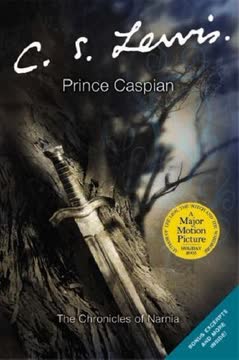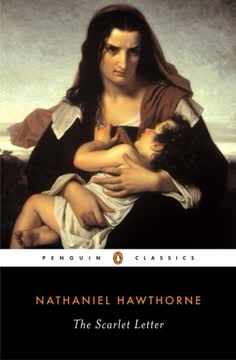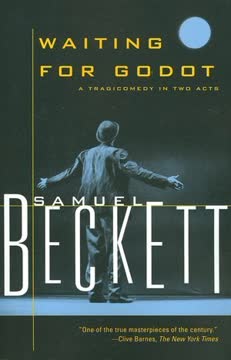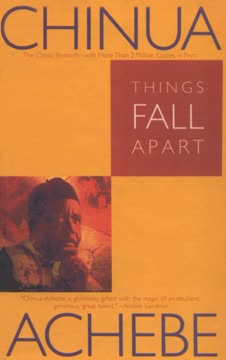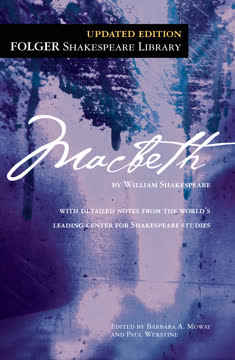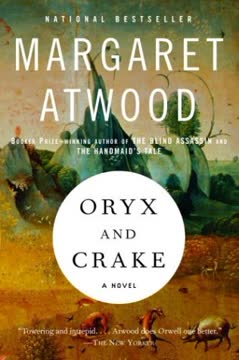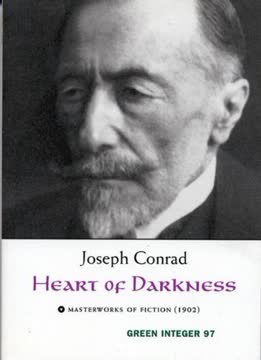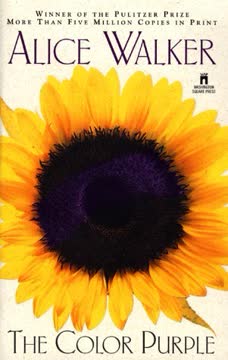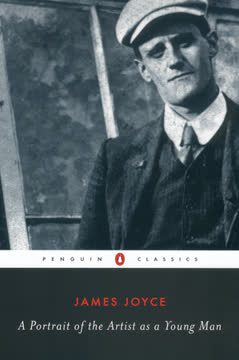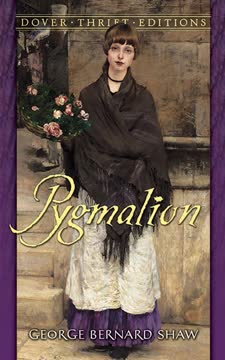Key Takeaways
1. The Evolution of English Literary History: From Ancient Roots to Modernity
In literary history, as in all else, nothing stands still.
Dynamic literary landscape. English literature is not a static entity but a constantly evolving tapestry, reflecting the historical, social, and intellectual currents of each era. Each period builds upon its predecessors, incorporating new influences and challenging existing norms.
Interconnectedness of periods. Understanding the historical context is crucial for appreciating the literature of any given period. The themes, styles, and concerns of writers are shaped by the events and ideas of their time. For example:
- The Norman Conquest profoundly impacted the English language and literary landscape.
- The Renaissance sparked a renewed interest in classical learning and artistic expression.
- The Victorian era grappled with the social and moral implications of industrialization and scientific progress.
Continuous transformation. From the ancient roots of Old English verse to the experimental forms of modern poetry, English literature has undergone a continuous process of transformation. Each generation of writers seeks to express its unique perspective on the human condition, contributing to the ever-evolving story of English literary history.
2. Old English Literature: Echoes of Paganism and the Dawn of Prose
Old English Literature has a richness which amazes the reader who overcomes the initial difficulty of the language.
Pagan origins and Christian influence. Old English literature, while rooted in pagan traditions, was significantly shaped by the Christianization of England. Early poems like "Beowulf" and "Widsith" reflect pagan themes, but extant versions were written by Christians, blending pagan and Christian elements.
Anonymous origins and imitative quality. Most Old English poetry is anonymous, with only a few poets like Caedmon and Cynewulf known by name. Much of the prose and some of the poetry is translated or adapted from Latin, though the degree of originality varies.
Language and dialects. Old English, vastly different from modern English, featured declinable nouns, pronouns, and adjectives, and a complex verbal system. Four main dialects existed: Northumbrian, Mercian, Kentish, and West Saxon, with West Saxon becoming the standard due to the political supremacy of Wessex.
3. Middle English Period: A Crucible of Linguistic and Literary Transformation
The period sees the development of Middle English with the gradual weakening of the inflexional system of the older period.
Linguistic evolution. The Middle English period witnessed the transformation of Old English into Middle English, marked by the weakening of the inflexional system and the influx of Scandinavian and French loanwords. Five main dialect areas emerged: Northern, East Midlands, West Midlands, South-eastern, and South-western.
Literary features. This era was characterized by transition and experimentation, with poets exploring new forms and media. French and Latin influences were significant, but some poets continued the Old English tradition. Oral tradition preserved poetic models, which reappeared in extant texts, particularly in the 14th century.
Prose and poetry. While poetry dominated, prose was primarily used for practical purposes, with Latin serving as the language of official documents and learning. The Katherine Group and Ancrene Riwle stand out for their individuality, despite being translations.
4. The Age of Chaucer: A Flourishing of English Literary Identity
He is, moreover, the forerunner in the race of great literary figures that henceforth, in fairly regular succession, dominate the ages they live in.
Standardization of English. The period saw the standardization of English, with the East Midland dialect becoming the dominant form due to the influence of London and the universities. This era marked the first full expression of the English tongue in the works of Chaucer.
Critical spirit and shift from anonymity. A sharper spirit of criticism and a more searching interest in human affairs emerged, along with a decline in the acceptance of established order. The age of anonymity began to fade, with more works being definitively ascribed to known authors.
Chaucer's unique position. Chaucer stands as the earliest of the great moderns, setting a new standard for English poetry. His acute observation, wide humanity, quickness of phrase, and formative spirit distinguished him from his contemporaries and successors.
5. From Chaucer to Spenser: A Bridge Between Eras
In reality it is a season of healthy fallow, of germination, of rest and recuperation.
Poverty of material and Scottish poetry. The period between Chaucer and Spenser is marked by a relative dearth of significant English literary output. However, Scottish poetry flourished, with figures like James I, Robert Henryson, and William Dunbar making notable contributions.
Development of drama. The popularity of romances waned, while drama gained importance. The period saw the rise of the professional actor and playwright, setting the stage for the Elizabethan era.
Importance of the period. Despite its apparent barrenness, this era served as a crucial period of transition and preparation. The literary impulse was slowly awakening, setting the stage for the great age to follow.
6. The Age of Elizabeth: The Zenith of English Renaissance
He is first, with no competitor for hundreds of years to challenge his position.
New classicism and abundance of output. The Elizabethan era saw the strong influence of the Renaissance, particularly the revival of Greek studies. This led to a new classicism in literature, with a sharper spirit of criticism and a more searching interest in man's affairs.
Standardizing of English. The period of transition is now nearly over. The English language has shaken down to a kind of average--to the standard of the East Midland speech, the language of the capital city and of the universities. The other dialects, with the exception of the Scottish branch, rapidly melt away from literature, till they become quite exiguous. French and English have amalgamated to form the standard English tongue, which attains to its first full expression in the works of Chaucer.
Development of the drama. The bold and critical attitude of the time was in keeping with the dramatic instinct, which is analytic and observant. Hence, after the long period of incubation detailed in the last chapter, the drama made a swift and wonderful leap into maturity.
7. The Age of Milton: Puritanism, Politics, and Poetic Grandeur
There now hangs that sacred Body upon the Crosse, rebaptized in his owne teares and sweat, and embalmed in his owne blood alive.
Political and religious turmoil. The period was dominated by the English Civil War, the Commonwealth, and the Restoration, which profoundly influenced the literature of the time. Puritanism and political upheaval shaped the themes and styles of many writers.
Milton's towering presence. John Milton stands as the dominant literary figure of the age, excelling in both prose and poetry. His works reflect the intellectual and spiritual struggles of the era, as well as his own personal convictions.
Metaphysical and Cavalier poets. The age saw the flourishing of metaphysical poets like Donne and Herbert, known for their intellectual complexity and religious intensity. Cavalier poets like Herrick and Lovelace offered a contrasting style, characterized by elegance, wit, and a focus on secular themes.
8. The Age of Dryden: Reason, Satire, and the Rise of Prose
A! fredome is a nobill thing! Fredome mayss' man to haiff liking!
Emphasis on reason and order. The Restoration brought a shift towards reason, order, and classical influences in literature. Dryden emerged as a key figure, championing these values in his poetry, drama, and prose.
Satire and political writing. The age was marked by sharp political divisions, leading to a surge in satirical and political writing. Dryden's "Absalom and Achitophel" stands as a prime example of this trend.
Development of prose. English prose gained prominence, with writers like Dryden establishing a clear, precise, and versatile style. This period laid the foundation for the prose of the 18th century.
9. The Age of Transition: Seeds of Romanticism
Now, sirs," saith dame Prudence, "sith ye vouche saufe to be gouerned by my counceyll, I will enforme yow how ye shal gouerne yow in chesing of your counceyll.
Decline of classicism. The period saw a gradual decline in the dominance of classicism, with writers beginning to explore new themes and styles. This marked the transition towards the Romantic era.
Emergence of new forms. The rise of the novel and the ballad, along with the development of allegory, reflected a shift in literary tastes and interests. These forms allowed for greater exploration of human emotions and experiences.
Development of style. Poetry saw a move towards simplicity and a revival of alliteration, while prose began to develop distinct styles, including the ornate, middle, and plain styles. These developments paved the way for the stylistic innovations of the Romantic era.
10. The Victorian Age: Morality, Materialism, and Literary Giants
A! fredome is a nobill thing! Fredome mayss' man to haiff liking!
Moral earnestness and social consciousness. The Victorian era was characterized by a strong emphasis on morality, social responsibility, and the exploration of complex ethical dilemmas. Writers like Dickens, Eliot, and Tennyson grappled with these issues in their works.
Realism and psychological depth. Victorian novelists sought to portray life with greater realism and psychological depth, exploring the inner lives and motivations of their characters. This led to the development of complex and nuanced character studies.
Social commentary and reform. Many Victorian writers used their works to critique social injustices and advocate for reform. They addressed issues such as poverty, inequality, and the plight of the working class, contributing to a growing awareness of social problems.
11. The Birth of Modern Literature: Disillusionment and Experimentation
And zee schull undirstonde that whan men comen to Jerusalem her first pilgrymage is to the chirche of the Holy Sepulcr wher oure Lord was buryed, that is withoute the cytee on the north syde.
Breakdown of established values. The early 20th century saw a breakdown of traditional values and a sense of disillusionment in the wake of World War I. This led to a questioning of societal norms and a search for new meaning and purpose.
Experimentation and innovation. Modernist writers experimented with new forms and techniques to capture the complexities and fragmentation of modern life. This included stream of consciousness, symbolism, and unconventional narrative structures.
Influence of psychology and social theory. The works of Sigmund Freud and Karl Marx had a profound impact on literature, shaping the themes and perspectives of many writers. Psychological insights and social critiques became central to the modernist project.
Last updated:
FAQ
1. What is "History of English Literature" by Edward Albert about?
- Comprehensive literary survey: The book offers a detailed history of English literature from its Old English origins through the mid-twentieth century, covering poetry, prose, drama, and criticism.
- Chronological and thematic structure: It is organized by literary periods, with each chapter focusing on the historical context, major authors, key works, and stylistic developments of the era.
- Contextual analysis: Edward Albert situates literary movements within their social, political, and philosophical backgrounds, helping readers understand how literature evolved alongside historical events.
- Major figures and movements: The book provides in-depth profiles of significant authors and discusses major literary movements such as Romanticism, Victorianism, Modernism, and the inter-War literary scene.
2. Why should I read "History of English Literature" by Edward Albert?
- Foundational knowledge: The book is a classic introduction for students and general readers seeking a clear, authoritative overview of English literary history.
- Broad coverage: It spans from the earliest English texts to the mid-20th century, making it a one-stop resource for understanding the evolution of English literature.
- Critical insights: Edward Albert offers not just summaries but also critical analysis of authors, genres, and literary trends, helping readers appreciate the significance of each period.
- Contextual richness: The work connects literature to historical, social, and intellectual developments, deepening the reader’s appreciation of how literature both shapes and reflects society.
3. What is the structure and scope of "History of English Literature" by Edward Albert?
- Chronological organization: The book is divided into 14 chapters, each focusing on a distinct literary period, from Old English to the mid-20th century.
- Coverage of genres: It examines poetry, prose, drama, and criticism, tracing the development of each form across different eras.
- Major authors and works: Each chapter highlights key writers, their major works, and their contributions to English literature.
- Supplementary materials: The book includes suggestions for further reading and an index, making it a useful reference for deeper study.
4. What are the key takeaways from "History of English Literature" by Edward Albert?
- Evolution of literature: The book demonstrates how English literature has continually evolved in response to historical, social, and intellectual changes.
- Influence of context: It shows the impact of events like the Renaissance, the Industrial Revolution, and world wars on literary themes and forms.
- Major literary movements: Readers gain an understanding of movements such as Romanticism, Victorianism, Modernism, and their defining characteristics.
- Development of genres: The work traces the rise and transformation of poetry, drama, and the novel, highlighting innovations and enduring traditions.
5. How does Edward Albert describe the development of English poetry in "History of English Literature"?
- Early poetry: Old and Middle English poetry is characterized by a blend of pagan and Christian elements, anonymity, and experimentation with form and language.
- Renaissance and Neoclassicism: The Elizabethan age saw a flowering of poetic forms like the sonnet and epic, while the Restoration and Augustan periods emphasized order, wit, and the heroic couplet.
- Romantic and Victorian poetry: Romantic poets focused on nature, emotion, and individualism, while Victorian poets like Tennyson and Browning combined lyricism with moral and philosophical themes.
- Modern and post-war poetry: The 20th century brought experimentation, allusiveness, and new forms, with poets like T. S. Eliot, W. H. Auden, and Dylan Thomas reflecting contemporary concerns and psychological depth.
6. What is Edward Albert’s assessment of the novel’s evolution in "History of English Literature"?
- Origins and early forms: The novel developed from medieval romances and picaresque tales, with early examples like Bunyan’s "Pilgrim’s Progress" and Richardson’s epistolary novels.
- 18th and 19th-century growth: The form matured with Richardson, Fielding, and Austen, and expanded in the Victorian era with Dickens, George Eliot, and Hardy, addressing social, moral, and psychological themes.
- Modernist innovation: Early 20th-century novelists like Joyce, Woolf, and Lawrence experimented with narrative techniques such as stream of consciousness and deep psychological analysis.
- Post-war trends: The novel reflected disillusionment, societal breakdown, and the search for identity, with influences from American and European literature and the rise of science fiction.
7. How does "History of English Literature" by Edward Albert characterize the major literary periods and movements?
- Old and Middle English: Marked by anonymous poetry, religious themes, and the gradual development of the English language.
- Renaissance and Elizabethan: A period of classical revival, innovation in drama and poetry, and the emergence of figures like Shakespeare and Spenser.
- Neoclassicism and Romanticism: The Restoration and Augustan ages emphasized order and wit, while Romanticism reacted with emotion, nature, and individualism.
- Victorian and Modern: Victorian literature reflected social conventions and moral questions, while Modernism and post-war literature embraced experimentation, psychological depth, and new forms.
8. What are the defining features of Victorian literature according to Edward Albert?
- Moral and social focus: Victorian literature often upholds social conventions and moral themes, sometimes producing "priggishly complacent" characters.
- Intellectual ferment: The period was shaped by scientific advances (Darwin), religious movements (Oxford Movement), and expanding education.
- Dominance of the novel: The novel became the leading literary form, exploring historical, domestic, and social issues.
- Revolt and reaction: Writers like Carlyle, Arnold, and Hardy challenged Victorian norms, introducing realism, skepticism, and social critique.
9. How does Edward Albert present the development of English drama in "History of English Literature"?
- Elizabethan to Restoration: The drama matured rapidly in the Elizabethan age, with Shakespeare and his contemporaries, and shifted to heroic plays and comedies of manners in the Restoration.
- 18th and 19th centuries: Drama declined in innovation, with sentimental comedies and melodrama dominating until the late 19th-century revival.
- Modern and inter-War drama: Realism and social problem plays emerged, influenced by Ibsen and Shaw, while the Irish literary revival brought poetic and national drama.
- Post-war experimentation: The mid-20th century saw the rise of new playwrights, absurdism, and the influence of radio, cinema, and television on dramatic forms.
10. Who are the most significant authors discussed in "History of English Literature" by Edward Albert, and what are their contributions?
- Geoffrey Chaucer: Regarded as the "father of English literature," Chaucer introduced originality, psychological insight, and narrative power, especially in "The Canterbury Tales."
- William Shakespeare: Central to the Elizabethan age, Shakespeare’s plays and poetry exemplify dramatic and linguistic innovation.
- John Milton: Bridged Elizabethan romanticism and neoclassicism, with epic works like "Paradise Lost" and influential prose.
- Tennyson, Dickens, Hardy, Joyce, Woolf, Eliot: Each represents a major phase or innovation in poetry, the novel, or drama, shaping the course of English literature.
11. How does Edward Albert’s "History of English Literature" address the impact of historical and social context on literature?
- Political and social upheavals: Events like the Restoration, Industrial Revolution, and world wars are shown to deeply influence literary themes, forms, and the rise of new genres.
- Technological and media changes: The advent of radio, cinema, and television expanded audiences and inspired literary experimentation.
- Intellectual movements: The book discusses the effects of scientific discoveries, religious debates, and psychological theories (e.g., Freud) on literary content and style.
- Cultural and national identity: Movements like the Irish literary revival and the influence of American and European literature are explored for their impact on English literary tradition.
12. What are the main literary concepts and innovations explained in "History of English Literature" by Edward Albert?
- Stream of consciousness: Modernist writers like Joyce and Woolf pioneered this technique to explore inner realities and psychological depth.
- Heroic couplet and blank verse: The evolution of poetic forms, from the dominance of the heroic couplet in the Augustan age to the freer forms of Romantic and modern poetry.
- Realism and social problem novel: The rise of realistic fiction and novels addressing social issues, especially in the Victorian and modern periods.
- Experimentation and allusiveness: 20th-century literature is marked by complex, allusive poetry (Eliot), narrative innovation, and the blending of genres and media.
Review Summary
History of English Literature is generally well-received as an introductory text for students of English literature. Readers praise its systematic approach, covering literary periods from Old English to Modern, with clear explanations of cultural contexts and major authors. The book is commended for its lucid writing, comprehensive coverage, and usefulness for exams. Some readers note its depth for a school textbook, while others mention it lacks detail in certain areas, particularly modern literature. Overall, it's considered a valuable resource for understanding English literature's development.
Similar Books
Download PDF
Download EPUB
.epub digital book format is ideal for reading ebooks on phones, tablets, and e-readers.

